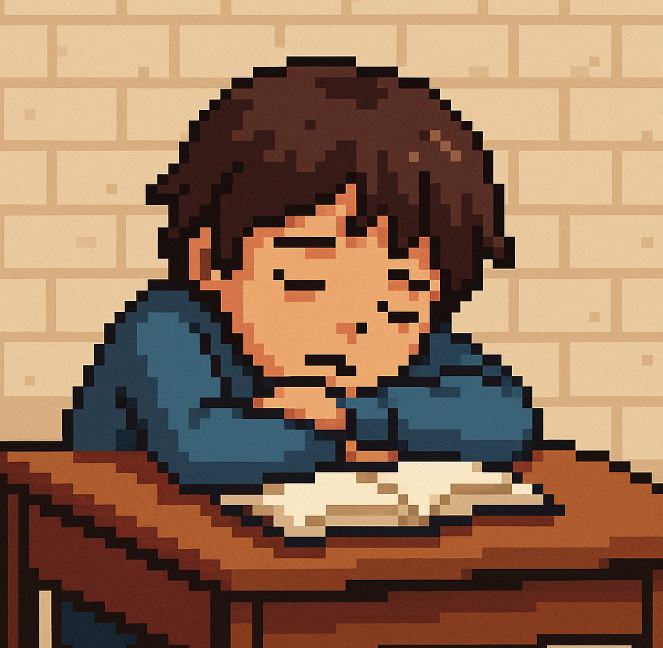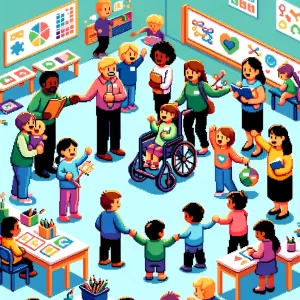
Why So Many Teens Aren’t Sleeping—And What Schools Can Do About It
You’ve probably heard it from a teenager before—shoulders slumped, eyes rimmed with fatigue: “I’m fine.” But here’s what “fine” actually looks like for many secondary school students: They’re staying up too late, wrestling with worries they can’t name, and walking into school every morning already exhausted.
In a new study of over 600 students in Eastern Nepal, researchers uncovered a disturbing trend: more than 1 in 4 adolescents were experiencing poor sleep, and those who felt academic or emotional stress were significantly more likely to be affected. The kicker? Even students who were just a little “touchy” or had a hard time winding down were at higher risk of disrupted sleep.
This isn’t just a sleep issue—it’s a warning sign. And for parents, teachers, and school psychologists, it’s time to pay attention.
The Silent Sleepless Epidemic in Schools
Teenagers are wired for later nights and longer mornings. That’s biology—melatonin (the hormone that helps you sleep) kicks in later during adolescence. But when you layer on academic pressure, social demands, and the constant hum of mental stress? You’ve got a recipe for chronic sleep deprivation.
In the Nepal study, 56% of students reported feeling some level of academic stress. These weren’t isolated outbursts of anxiety—they were persistent, internalized feelings of pressure, expectation, and worry. Students who reported academic stress were twice as likely to experience poor sleep. Those showing symptoms of mental stress? Nearly twice as likely again.
Sleep is the first casualty in a student’s battle with stress—and the fallout doesn’t end there. Poor sleep impairs attention, memory, and emotional regulation. In simple terms: a tired teen is a struggling teen.
What the Research Reveals (and Why It Matters)
Let’s break down the science behind the story.
This wasn’t a study of university students pulling all-nighters. These were 9th and 10th graders, many facing high-stakes exams that would shape their futures. Using validated tools like the Pittsburgh Sleep Quality Index and the DASS-21 mental stress scale, researchers uncovered several key findings:
- 27.6% of students had poor sleep quality.
- Students with academic stress were more than twice as likely to sleep poorly.
- Emotional symptoms like feeling “touchy,” struggling to relax, or being agitated were all significantly linked to disrupted sleep.
Even mild emotional stress mattered. Students didn’t have to be clinically depressed or anxious—just feeling a bit on edge or overwhelmed was enough to derail their sleep.
This paints a clearer picture of the mind-body connection: stress impacts the nervous system, ramps up emotional arousal, and disrupts sleep cycles. And the worse a student sleeps, the harder it becomes to manage the next day’s stress. It’s a vicious cycle—one that quietly erodes resilience, learning, and well-being.
From Research to Real Life: What Parents and Schools Can Do
If you’re a parent, teacher, or school counselor, here’s the takeaway: don’t wait until kids are in crisis. The signs of stress and sleep loss are often subtle—irritability, mood swings, fading motivation, or simply saying “I’m tired” more often than usual.
Here are a few practical steps to consider:
🔹 Reimagine School Schedules
Schools often start too early for teenage biology. Advocating for later start times (backed by research) can have a big impact on sleep and academic performance.
🔹 Normalize Stress Conversations
Create a culture where it’s okay to say “I’m overwhelmed.” Stress management should be taught as a life skill—alongside math and reading.
🔹 Rethink the Workload
Teachers and administrators should reflect: Are we assigning homework that teaches, or homework that crushes? Are we building in breathing space, or constantly turning the screws?
🔹 Prioritize Sleep Hygiene
Talk about blue light, caffeine, and bedtime routines the same way we talk about healthy eating. Teens may roll their eyes, but the message sticks.
🔹 Boost Mental Health Supports
More school counselors, peer support groups, and teacher training can make it easier to identify and help students dealing with chronic stress.
A Bigger Picture—and a Call to Action
The story from Nepal is a global one. In every country, education systems are pushing kids harder and earlier. But we often forget the cost. Behind every late-night study session or anxiety-laced report card is a young person whose health might be quietly unraveling.
What this study makes clear is that sleep isn’t optional—it’s foundational. And if stress is stealing our children’s sleep, it’s stealing their capacity to learn, grow, and thrive.
Let’s Talk About It.
We want to hear from you:
- What’s the biggest mental health challenge you see in schools today?
- How can your school better support students’ emotional well-being?
- What’s one insight about sleep and stress that’s changed how you parent, teach, or lead?
Drop a comment, share this blog, and start the conversation in your school community.
Help a Child. Shape a Future.
Your $5/month subscription to This Week in School Psychology gives you more than insights—it gives you tools to change lives. Every week, we break down the latest research into plain, practical guidance you can use to support students, reduce stress, and create healthier schools.
We’re fully independent, and your support keeps this mission alive. Subscribe now and be part of the solution.



